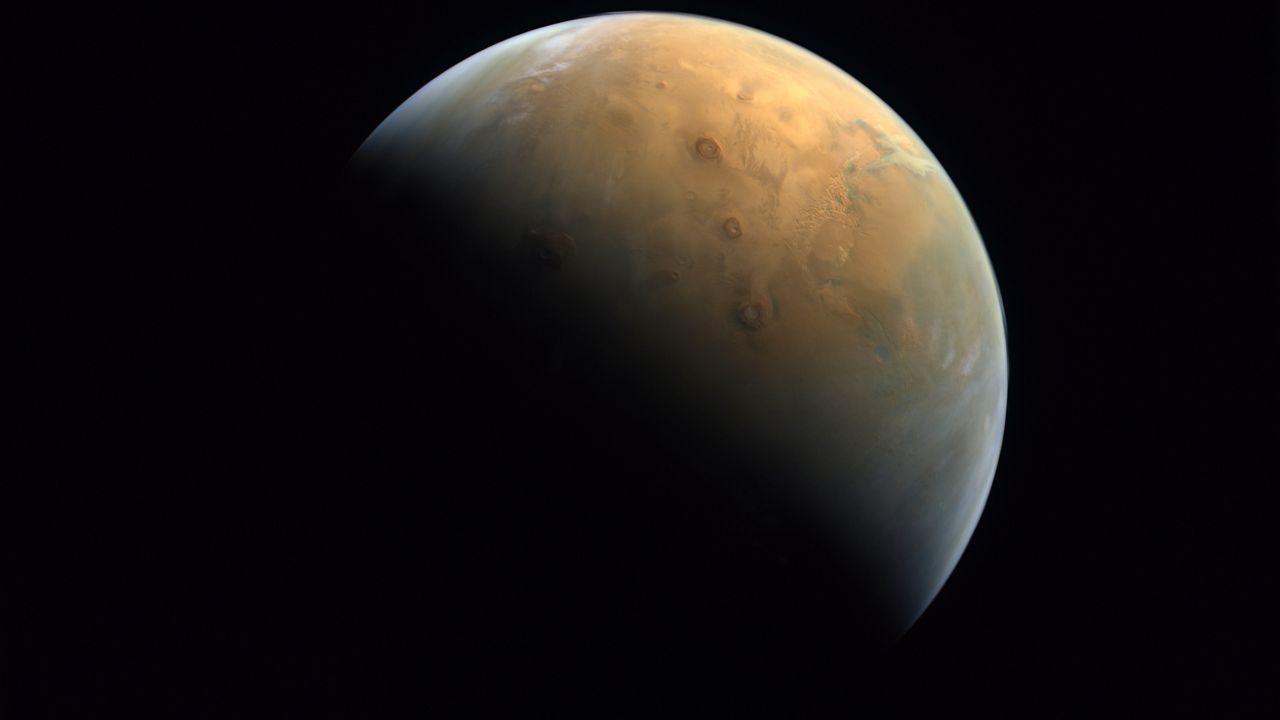Spring starts next month on Earth, but winter can last for years on other planets in the solar system.
With the successful landing of NASA’s Perseverance on Mars, you may be thinking a little bit more about other planets these days.
Did you know seasonal changes aren’t something unique to earth? However, they can be vastly different between planets.
Planetary seasons are determined by axial tilt and and its distance from the sun. Take Earth for example.
Earth’s orbit is nearly circular, so that doesn’t have much of an effect on the climate. It’s the axial tilt that causes almost all of our season changes.
When the North Pole is tilted towards the sun, it’s summer in the northern hemisphere. Six months later when the North Pole is tilted away from the sun, winter emerges in the Northern Hemisphere.
Now if you look at Jupiter and Venus, both of those planets have very small axial tilts. In fact, those two feature tilts of just three degrees compared to Earth’s 23.5 degree tilt.
As a result, seasonal changes on those planets aren’t very noticeable. Spring on Venus isn’t very different from fall, especially considering Venus’ dense, acidic atmosphere keeps surface temperatures at 750 Kelvin, or 890 degrees Fahrenheit, all year round.
It’s pretty much impossible to distinguish seasons on Mercury because of its axial tilt at just 0.03 degrees and erratic movement. It rotates three times in two of its years around its highly elliptical orbit, so sometimes the sun can actually appear to be moving backwards from Mercury.
On the opposite side of the spectrum, Mars’ greater axial tilt and variable distance from the sun on its eccentric orbit results in seasonal changes that are greater than what we see here on Earth. During the summer, Mars can get as warm as about 70 degrees Fahreinehit.
Meanwhile, winters can get as cold as -234 degrees Fahrenheit on Mars. To put that in perspective for you, Antarctica’s coldest temperature on record was just -128 degrees Fahrenheit.
There’s also more of a difference in the length of seasons. Earth’s are pretty evenly spaced between 90 and 93 days, but seasons drag on a little bit more on Mars.
Spring lasts the longest on Mars at 194 days, and winter is the shortest of the 4 seasons coming in at 154 days.
That’s nothing compared to Uranus though. Like Earth, Uranus’ orbit is nearly circular so it keeps a similar distance from the sun all year long.
However, Uranus’ tilt is nearly three and a half times greater than Earth’s coming in at 82 degrees. The end result is 20-year-long seasons and unusual weather.
Equivalent to roughly 84 years here on Earth, a quarter of the Uranian year is met with the sun shining directly on one pole for a long hot summer, while plunging the other half of the planet into a long, dark, and frigid winter.
When the sun does finally start to return to parts of the planet, it helps trigger gigantic springtime thunderstorms the size of North America.
As for the other planets, Venus has the shortest season ranging between roughly 55-58 days due its shorter orbit. Seasons are about three years long on Jupiter, seven years on Saturn, and more than a whopping 40 years in length for Neptune.
Saturn’s and Neptune’s axial tilts are very similar to ours. So even though seasons are noticeably longer there, seasonal changes are about as noticeable as here on Earth.








